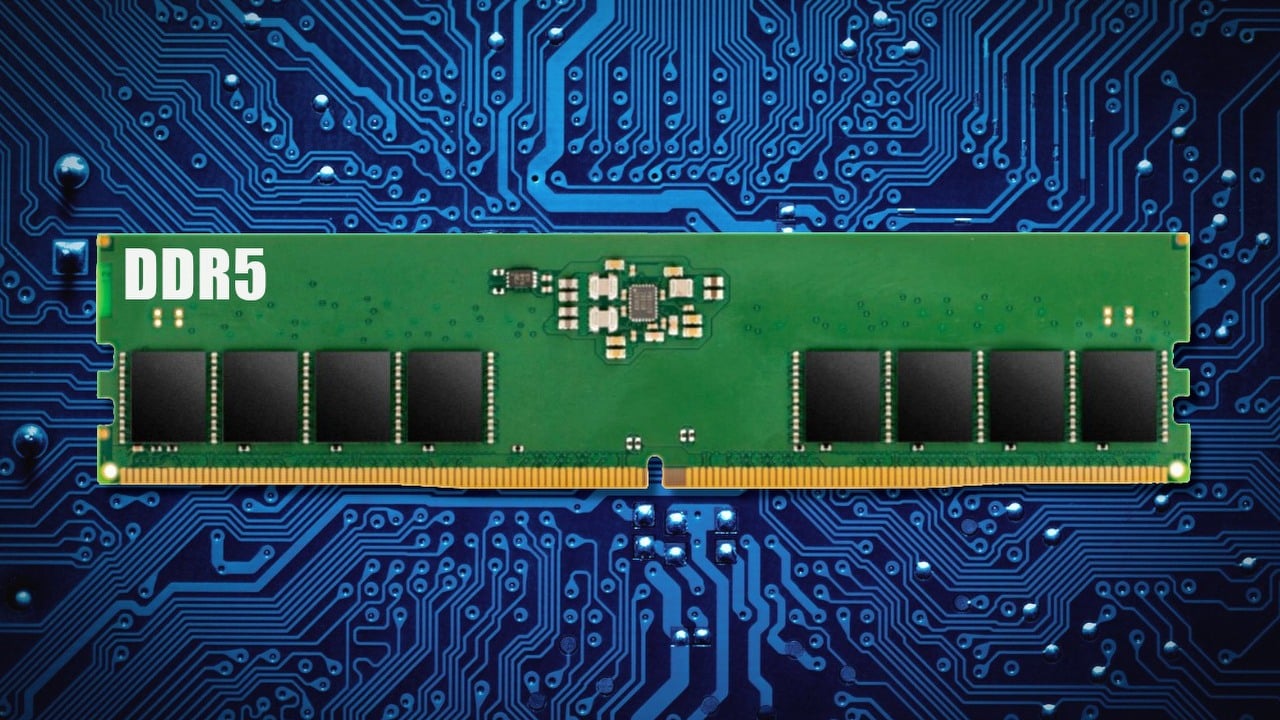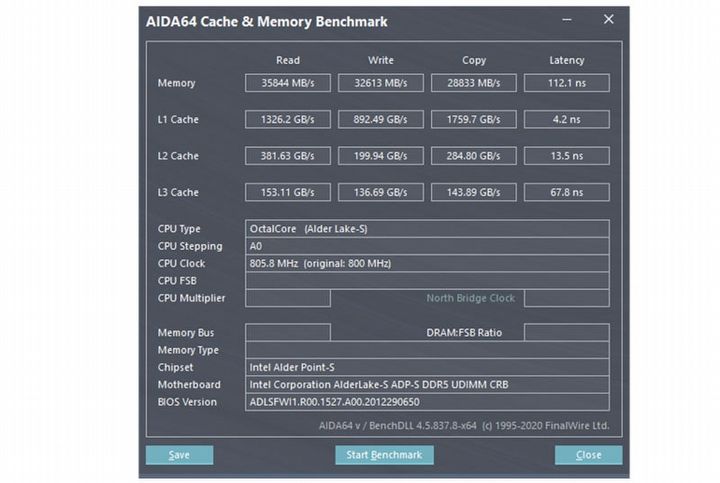DDR5 With Significant Performance Gains Compared to DDR4
Memory manufacturer Longsys published a benchmark of new DDR5 RAM chips. The results in data write and read speeds are much better than in the case of DDR4. Is there going to be a revolution in performance?

- Memory chip manufacturer Longsys revealed benchmark results of its new DDR5 memories.
Longsys published information about the launch of new DDR5 memories and at the same time their benchmark results. The prototype modules named ES1 have a base clock speed of 4800 MHz and two variants - 16 GB and 32 GB. Some benchmarks report performance gains of up to 112% over DDR4. At the same time, almost doubled latency seen in AIDA64 results is somewhat worrying.
Longsys published results from two benchmarks, AIDA64 and Ludashi, popular in China:
DDR5 32GB CL40 | DDR4 32GB CL22 | Difference. | |
AIDA64 read | 35844 | 25770 | 39% |
AIDA64 write | 32613 | 23944 | 36% |
AIDA64 copy | 28833 | 25849 | 12% |
AIDA64 latency | 112,1 | 56,8 | 97% |
Ludashi | 193684 | 91575 | 112% |
CL - CAS Latency
CL40 latency (40-40-40-77) may raise some concern, but it's worth remembering that this is only the number of cycles needed to receive data from a memory cell. Better bandwidth requires higher clock speeds for RAM chips - but at the same time, the time per cycle decreases. That's why, despite increasing CL values in successive generations of DDR memory, the access latency actually remains at a similar level.
It is worth mentioning that the tested modules were compliant with JEDEC specfication. Consumer products should have lower latency with good overclocking capabilities, especially those intended for gamers. The test platform used an engineering sample of an 8-core processor from Intel's upcoming 12th-gen Alder Lake. It is expected to debut in late 2021 and it will come with a new type of socket, called LGA1700. Motherboards for next-gen processors will fully support DDR5 memory.
- Longsys - official website
- Intel's in Trouble Again; Launch of 7 nm CPUs Delayed
- Memory Prices Will Increase, DDR3 With 50% Hike in 2021
0

Author: Arkadiusz Strzala
His adventure in writing began with his own blog and contributing to one of the early forums (in the olden days of Wireless Application Protocol). An electrical engineer by profession, he has a passion for technology, constructing and, of course, playing computer games. He has been a newsman and writer for Gamepressure since April 2020. He specializes in energy and space tech. However, he does not shy away from more relaxed matters every now and then. He loves watching science-fiction movies and car channels on YouTube. He mainly plays on the PC, although he has modest console experience too. He prefers real-time strategies, FPS and all sorts of simulators.
Latest News
- End of remote work and 60 hours a week. Demo of Naughty Dog's new game was born amid a crunch atmosphere
- She's the new Lara Croft, but she still lives in fear. Trauma after Perfect Dark changed the actress' approach to the industry
- „A lot has become lost in translation.” Swen Vincke suggests that the scandal surrounding Divinity is a big misunderstanding
- Stuck in development limbo for years, ARK 2 is now planned for 2028
- Few people know about it, but it's an RPG mixing Dark Souls and NieR that has received excellent reviews on Steam, and its first DLC will be released soon


